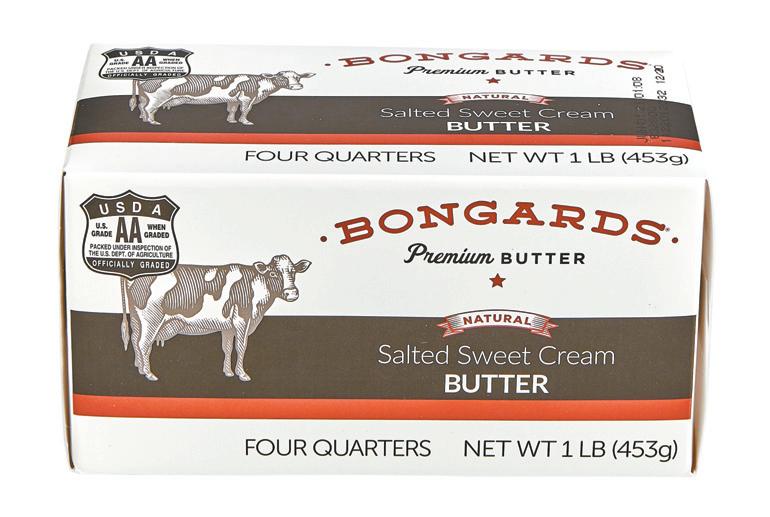

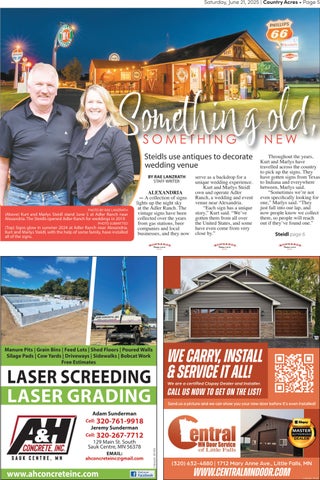









BY RAE LANZRATH STAFF WRITER
GARFIELD — The fiber-bearing animals at Shepherds Bay Farm have helped Terry and Kathy Sletto fulfill their dreams of spinning yarn. Using a wheel from the 1800s, the Slettos spin wool from their animals. The farm is home to
sheep, llamas, rabbits and a few friendly barn cats that all












serve a special purpose.
The sheep herd is made up of 40 Shetland sheep who produce high-quality wool, Kathy said. The farm is home to 30 Angora rabbits, which grow hair long enough to be spun into yarn. Kathy waits until the hair is around 8 inches in length before she trims it off the animals.

“Once it reaches a certain length, it begins to fall out on its own,” Kathy said. “But then, you have to come out here every day to pick just a few pieces off each animal.”
Kathy uses a wheel to spin the wool from her rabbits to make yarn. She said the sheep produce way too much wool for her to spin it all herself, so she
sends it off to a mill to get spun.
Kathy has two wheels to make yarn. One of them was made by her great-great-grandfather when he arrived in America from Norway. The other is a newer version that she purchased to reduce wear and tear on her original.
“It was made in the 1800s, so there are no screws or anything in it,” Kathy said. “The glue that holds it together is from (an) ox, and that’s about it, so obviously it falls apart after a while.”
Kathy keeps the wheel safely at home when she is travelling or teaching classes, but it is still fully func-
tioning.
The newer wheel has the same design as the other. Kathy said they make wheels that are different designs, but she wanted one that looked like her original.
The wheel works by snagging wool and twisting, or spinning, it into tightly-wound yarn. The operator pushes a foot pedal on the bottom of the wheel, making it turn.
Sletto page 2

















Published by
Star Publications
Copyright 2024
522 Sinclair Lewis Ave.
Sauk Centre, MN 56378
Phone: 320-352-6577
Fax: 320-352-5647
NEWS STAFF
Mark Klaphake, Editor
Mark.k@dairystar.com
Rae Lanzrath, Assistant Editor
raeanna.l@star-pub.com
Tiffany Klaphake, Assistant Editor tiffany.k@dairystar.com
Sara Hoppe, Copy Editor sarastarpub@gmail.com
Carol Moorman, Writer carol@melrosebeacon.com
Natasha Barber, Writer natasha@saukherald.com
Ben Sonnek, Writer
ben.s@saukherald.com
Hans Lammeman, Writer hans.l@star-pub.com
Story ideas send to: raeanna.l@star-pub.com
SALES STAFF
Robin Brunette, 320-293-5911 robin@saukherald.com
Missy Traeger, 320-291-9899 missy@saukherald.com
Tim Vos, 320-845-2700 tim@albanyenterprise.com
Mike Schafer, 320-894-7825
mike.s@dairystar.com
Neil Maidl, 320-292-4454
neil.m@star-pub.com
Jaime Ostendorf, 320-309-1988 jaime@star-pub.com
Bob Leukam, 320-260-1248 bob.l@star-pub.com
PRODUCTION STAFF
Amanda Thooft
Nancy Powell
Maddy Peterson
Cheyenne Middendorf
Karen Knoblach
Annika Gunderson
Nadiia Griepentrog
Emma Anderson
Deadlines:
Country Acres will be published the first Saturdays of April, May, June, September, October and November, and the third Saturday of every month. Deadline for news and advertising is the Friday a week before publication.
ISSN: Print 2834-6440 Online 2834-6459
“Where farm, meets family, meets country living.”








Kathy makes mittens, hats, clothing and dryer balls using the wool from her animals. The items made using yarn from the rabbits are softer, whereas the sheep wool tends to be stiffer, Kathy said. Some sheep have very
Yarn is displayed May 29 at Shepherd’s Bay Farm near Alexandria. Yarn is made from sheep and rabbit wool.
coarse wool, and that is what is used to make dryer balls. The balls are designed to roll around in a clothes dryer and collect lint, reduce static and fluff the clothes.



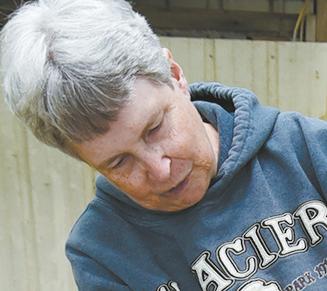


Each product is made by hand in the Sletto home. When rabbit wool is used to make a product, a tag is added with a photo of the rabbit it came from.

“It just adds a little personal touch,” Kathy said. All the products Kathy makes are sold at trade shows, usually in the Twin Cities. She also sells yarn at the shows, so people can create their own products. Kathy used to sell “raw” wool but no longer does, as it is harder to transport than yarn.
As soon as the wool has been removed from the animals, it is considered “raw,” Kathy said. Some producers sell the raw wool as is, before being washed.
“It’s full of dirt and straw and whatever else comes from the animal,” Kathy said. “Some people
want it like that because it’s greasy, too, from the animal.”
Kathy said they used to bring unwashed wool to vendor shows to sell it. They also washed some wool but still brought it to the shows raw.
“It takes up so much space when it’s raw, so now we just sell yarn,” Kathy said. “We needed a whole truck just to bring it.”
When the wool was raw, the Slettos had to load up several garbage bags full of wool.
Sletto page 3











































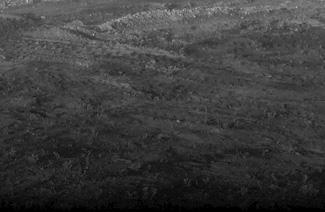






























































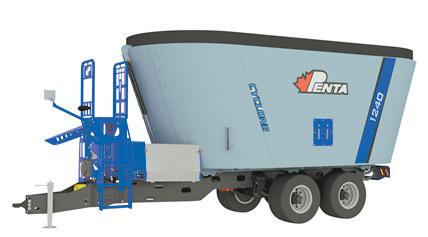






Aitkin County - 10 Acres - $34,900 - Active
Anoka County - 1.3 Acres w/Home - $429,000 - Sold
Benton County 1.7 Acres w/Home $1,299,000 - Active
Carlton County - 106.5 Acres - $372,750 - Active
Cass County - 158.87 Acres - $397,175 - Sold
Chisago County - 24 Acres - $170,000 - Active
Chisago County - 26 Acres - $260,000 - Active
Chisago County - 27 Acres w/Pole Shed - $270,000 - Active
Clearwater County - 94.81 Acres w/Home - $349,000 - Sold
Crow Wing County - 32.17 Acres w/Home - $399,900 - Sold
Dakota County - 6.89 Acres w/Home - $1,100,000 - Active
Freeborn County - 164 Acres - $299,000 - Sold
Isanti County - 14.22 Acres - $174,900 - Active
Hubbard County - .27 Acre w/Waterfront Home - $439,000 - Active
Kanabec County - 20 Acres w/Home - $275,000 - Sold
Meeker County - 120 Acres - $101,250 - Sold
Mille Lacs County - 259.7 Acres - $529,000 - Sold



Morrison County - 56.14 Acres - $215,000 - Sold
Morrison County - 120 Acres - $432,000 - Sold
Morrison County - 129 Acres - $399,900 - Sold
Morrison County - 133 Acres - $518,700 - Sold
Nobles County - 200 Acres - $1,220,000 - Sold
Otter Tail County - 80 Acres w/Home - $299,900 - Sold
Rice County - 41 Acres w/Home - $1,250,000 - Sold
Rice County - 201 Acres - $1,500,000 - Sold
Scott County - 20 Acres w/Home - $1,200,000 - Sold
Scott County - 36 Acres w/Home - $3,250,000 - Active
Sherburne County - 5.58 Acres Build Site - $174,900 - Sold Todd County - 68.28 Acres w/Home - $749,900 - Sold
Todd County - 73.89 Acres w/Home - $697,900 - Pending
Todd County - 116 Acres - $439,000 - Sold Wadena County - 45.18 Acres - $211,000 - Sold Washington County - 67.4 Acres - $2,138,000 - Reduced
County - 106.48 Acres - $1,250,000 - Sold



The crowning of the 72nd Princess Kay of the Milky Way is officially one step closer. This year, 10 young women from across the state were named finalists for the coveted title.
Dairy princesses from throughout the state come together to compete for the Princess Kay title in a 2-day event. County dairy princesses represent their families, communities and counties while advocating for the dairy industry. Princess Kay represents all Minnesota dairy farmers.
The 72nd Princess Kay of the Milky Way will be announced Aug. 20, right before the Minnesota State Fair begins. Throughout the state fair, all 10 finalists have the honor of getting their likenesses carved from butter, affectionately called butterheads.
This year’s finalists include Natalie Clemenson from Goodhue County, Monica Evers from Wabasha County, Paige Frenchick from Meeker County, Nicole Hauschildt from Wabasha County, Alexis Hoefs from Le Sueur County, April Klaphake from Stearns County, Heidi Montag from Benton County, Lauren Steffl from Brown County, Malorie Thorson from Wright County and Haylie Wielenberg from Todd County.
Frenchick, Klaphake and Wielenberg proudly represent counties in Country Acres coverage areas.
We wish all 10 finalists the best of luck and thank them for representing dairy in Minnesota.



BY TIFFANY KLAPHAKE STAFF WRITER
MANANNAH — Even though Paige Frenchick grew up on a dairy farm, she had not heard of the dairy princess program. That was until a chance encounter in high school led her on a path towards the Princess Kay of the Milky Way program and getting her likeness carved in butter as a finalist.
“I was at the county fair and was milking one of our cows in the parlor, and a lady started asking me some questions,” Frenchick said. “Then, a past Meeker County Dairy Princess came up to me and said I should consider running for Meeker County Dairy Princess.”
The following spring, Frenchick chose to run for Meeker County dairy royalty. She was crowned a dairy ambassador, then a junior princess, and has been the Meeker County Dairy Princess for the past two years.
“I absolutely fell in love with the (princess) program,” Frenchick said.
In May, Frenchick was selected as one of 10 Princess Kay of the Milky Way finalists. Each of the finalists will compete again in August, and the winner will be announced Aug. 20, the day before the Minnesota State Fair begins.
“I am looking forward to getting to know the other finalists, meeting new people and working on my professional skills,” Frenchick said. “The princess program has already provided this for me, but I am excited to see where being a finalist will take me and help me to improve those skills.”
Frenchick is the daughter of Melissa Tessmer and Josh Frenchick.
“My favorite dairy princess events are any that we go to daycare groups and school visits where I get to talk to kids,” Frenchick said. “We have Jerseys on our farm, so I like to talk about that, and I always get the question, ‘Do they give chocolate milk?’ It’s so fun to see the gears turning in their head, and knowing that they are absorbing the information you tell them is nice. I feel like those are the ones you make the biggest impact with.”
The Frenchick family milks 28 Jersey cows in a tiestall barn near Eden


Paige Frenchick smiles with a calf June 2 at her farm near Manannah. The Frenchicks milk 28 Jersey cows at their farm.
Valley. The family had been renting a barn to milk their cows while housing the youngstock at their own farm site for 10 years. In 2018 the family made the necessary repairs to the barn on the farm site and was able to move their cows home.
On the farm, Frenchick helps her family by milking, feeding and bedding the cows.
“We are a small farm, so I jump around (to) help with a lot of tasks,” Frenchick said.
Aside from helping on the farm, Frenchick showed dairy cattle, judged
dairy cattle and participated in dairy bowl in 4-H and judged dairy cattle in FFA while in high school. Frenchick’s dairy bowl team won the state 4-H contest in 2023 and advanced on to nationals.
Participating in these organizations led Frenchick to attend the University of Minnesota-Twin Cities, where she is a sophomore majoring in biology.
“I plan to go into dairy cattle genetics and reproductive services, and I hope to continue dairy farming,” Frenchick said.







































































































































































BY AMY KYLLO STAFF WRITER
SAUK CENTRE — April
Klaphake was trying to study for her biology and pre-med major finals when she found out she had been named a top 10 finalist for Princess Kay of the Milky Way. The future family medicine doctor plans to make sharing about dairy nutrition a top priority as a dairy princess.
“Our dairy farmers, they work so hard, and they make these amazing products that are so nutrient-packed,” Klaphake said. “It is worth people’s time to promote.”
Klaphake, who just finished her freshman year at the University of St. Thomas in St. Paul, is the daughter of Mark and Jennifer Klaphake of Sauk Centre. Klaphake did not grow up on a farm, but family ties, dairy experiences in 4-H and helping as a relief milker at a local dairy farm connect Klaphake to the dairy community as a Stearns County Dairy Princess.
“Dairy princesses, they can be the face for the farmers,” Klaphake said. “They’re a very approachable, respectable person who knows what they’re

talking about. … They can be the bridge between the farmers because the farmers are always working hard on the farm. They don’t have the time to go interact with consumers.”
Klaphake said if she is named Princess Kay, she wants to prioritize connecting with current and future health professionals.
“I would love to talk to more college students, especially pre-med students like me, as well as other health care providers, about how nutrient-rich
dairy is,” Klaphake said.
Klaphake said she sees the role of Princess Kay as conducive for sharing these messages.
“Princess Kay is such an available person to go talk to people, especially in the cities, who don’t know a lot about dairy farming,” Klaphake said. “It makes them feel so much (safer) as a consumer … knowing where their food comes from. … (Nowadays), people are more worried about where their food comes from and how
it affects their health.”
When it comes to health and nutrition, Klaphake said she wants to share a simple message.
“Milk has 13 essential nutrients with large amounts of calcium and vitamin D,” she said. “There are so many health benefits that correlate with all of those, especially the calcium and bone strength for young people and our elderly people.”
In third grade, Klaphake began showing dairy in 4-H. Klaphake has shown dairy
calves and heifers in 4-H and participated in dairy judging and dairy quiz bowl.
This winter, Klaphake worked on a local dairy farm over her 6-week winter break as a relief milker to replace one of the farmers who was recovering from an injury.
Klaphake’s mom as well as the farmer she milked with this winter encouraged her to compete as a dairy princess.
“I would milk cows with (the farmer) four mornings a week, and he looked at me one day, he’s like, ‘You can do it, just go for it,’” she said.
Now, as a finalist for Princess Kay, Klaphake said she is looking forward to the opportunities that come with the role, such as sharing about dairy at the Minnesota State Fair and having her likeness sculpted in butter.
When she receives her buttery twin, it will be the second butter sculpture at the Klaphake home. Klaphake’s mom, who was a finalist in 1997, still has her sculpture in the freezer.
The Klaphakes plan to have a butter sculpture party, with sweet corn and pork chops served with butter.
Looking to her future, Klaphake said, as a medical doctor someday, she will be able to promote dairy on a daily basis in her work.
“If you hear it from your doctor, you’re more likely to do it,” Klaphake said. “They’re the people you trust about your health.”








*Offer ends 6/30/2025. Available at participating and eligible dealers only. Offer may vary by product type, series, model and select units in dealer’s current inventory. Must take delivery from dealer stock by 6/30/2025. Offers available on new equipment in US and Canada only. Some restrictions apply. Length of contract and rate may vary. Monthly payment subject to change. Prior purchases not eligible. See dealer for details. Financing provided on approval of credit by authorized Bobcat finance providers to well-qualified buyers. All finance programs and rates are subject to final approval by the applicable Bobcat finance provider and are subject to change at any time without notice. Administrative fees may apply. Offer not available to government accounts, national accounts and municipal/utility bid customers. Bobcat Company reserves the right to extend or discontinue any of these programs at any time without prior notice.




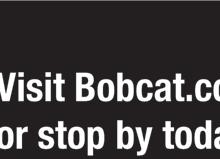











BY TIFFANY KLAPHAKE STAFF WRITER
LONG PRAIRIE — The seed of Haylie Wielenberg’s dairy princess journey was planted many years ago, and she has continued to cultivate her dream to come true.
Wielenberg grew up in rural Long Prairie, next door to her uncle, James, and her grandmother, Jane, who lived on a dairy farm where they milked 95 cows in a double-6 herringbone parlor and raised 200 acres of corn and alfalfa. When Wielenberg worked at the farm, her duties included milking cows and feeding the heifers.
Wielenberg is the daughter of Sarah Maland and Mike Wielenberg.
Wielenberg’s aunt was a Todd County dairy princess years ago, and as long as she can remember, Wielenberg’s family would encourage her to run to be a county dairy princess when she was old enough.
“I also felt that growing up in the dairy industry helped shaped me, and I wanted to give back to the industry and support farmers and teach
others about dairy,” Wielenberg said. “This was something that meant so much to me, and I wanted to share that with others.”
The Wielenberg family sold their herd in 2024 and have transitioned to custom raising heifers.
Not having cows around did not deter Wielenberg from being involved in the dairy industry. She has been a member of the Wykeham Willing Workers 4-H club since she was in kindergarten and has held officer positions for her local club and for the Todd County Leader’s Council. Within 4-H, Wielenberg has shown dairy cattle, sheep, rabbits and participated in general livestock project bowl. She kept two heifers from her family’s herd to show at the Todd County Fair for her last year in 4-H.
Throughout high school, Wielenberg was also active with the Long Prairie-Grey Eagle FFA chapter, where she was president her senior year and judged dairy cattle.
“I liked the people you meet and the experiences you get to have through these organizations, and you learn so


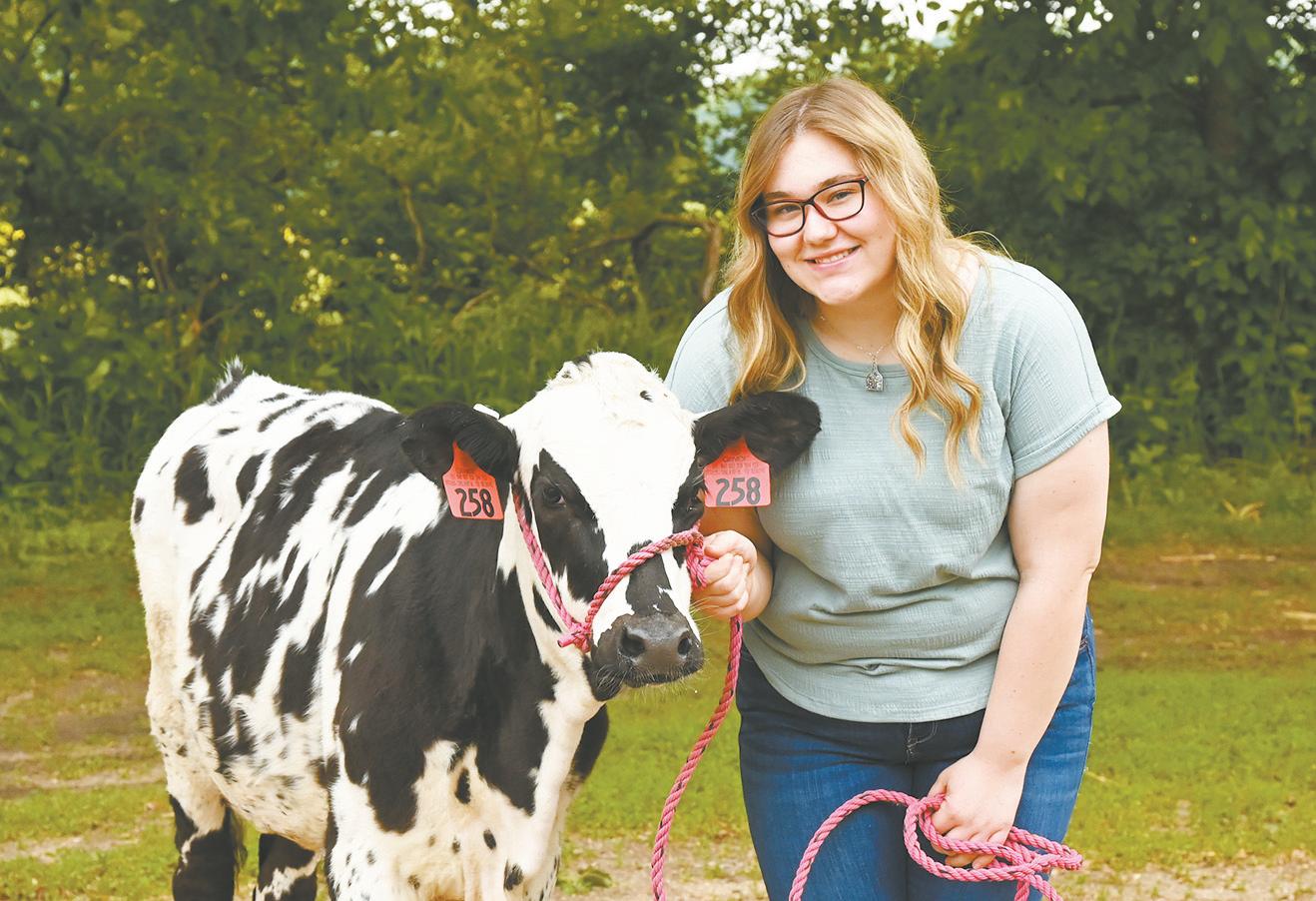
much from that,” Wielenberg said. “Everyone has a different background and experiences; it is great to learn from them.”
Wielenberg has also gotten to know community members and dairy farmers throughout her county, having served as a junior dairy ambassador for three years and the past two years as a dairy princess.
“I especially like doing the school visits; the kids have such crazy questions,” Wielenberg said. “It is also fun serving up ice cream through our county’s ice cream trailer.”
The Todd County American Dairy Association owns


an enclosed trailer with two soft serve ice cream machines inside. The wagon makes its way around the county to serve soft serve ice cream at the local town festivals. The county’s dairy royalty team makes appearances in the trailer to serve the ice cream.
Although Wielenberg is undecided on what to do with her butterhead after the completion of the Minnesota State Fair, she is looking forward to her time as a finalist. Each of the 10 Princess Kay of the Milky Way finalists will compete again in August, and the winner will be announced at a coronation on

the eve of the Minnesota State Fair.
“I am looking forward to getting to know the other girls and learning their dairy story and the opportunities I will have because of this program,” Wielenberg said.
Wielenberg is currently attending the University of Minnesota Crookston majoring in animal science with a pre-vet emphasis.
“I hope to attend the College of Veterinary Medicine in the Twin Cities to become a large animal vet in the future,” Wielenberg said.
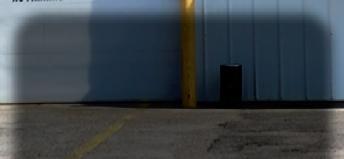






















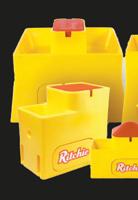













tem.
Thoele has five high-tunnel greenhouses that grow produce using hydroponics.
Barry’s Cherries Hydroponic Produce near Staples. Barry Thoele transitioned from growing inground gardens to high-tunnel greenhouses.





LANZRATH STAFF WRITER
STAPLES — In-ground gardens are a lot of work, and Barry Thoele has found a way to grow produce without it being in the ground.



For more than 20 years, Thoele has been growing vegetables for sale at his home in rural Staples. After growing in the ground with limited success due to the sometimes erratic Minnesota weather, Thoele transitioned into high-tunnels and implemented a hydroponic sys-






“Our soil is not great for growing in the ground — mostly sand, and where there isn’t sand, there is rock,” Thoele said. “This is much easier when it comes to nutrient management and pH.”
Thoele grows tomatoes, kale, romaine lettuce, herbs, cucumbers, peppers and strawberries in his greenhouses.
Some of the plants, such as strawberries, grow in large channels with a coir base around them. Coir is
the outer layer of a coconut and is used and reused as a growing medium, Thoele said. The channels have water with nutrients pumped into them, any excess returning to the reservoir — all of which is part of the hydroponic system.
“We have specific nutrients for each plant that are mixed in with the water,”
Thoele page 16




























































































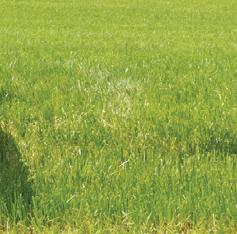





















2019 New Holland L228, EH Controls, Performance Package, Elite Cab, 575 Hours
2015 New Holland Roll-Belt 450, Roto-Cut, Endless Belts, 9,300 Bales
2005 New Holland BR740, Silage, Bale Slice, Net & Twine, 9,200 Bales
2019 New Holland L220, EH Controls, Performance Package, Cab-Heat-Air, 1,300 Hours
2007 New Holland HT154, 12 Wheel, High Capacity, 55” Wheels
2016 New Holland Roll-Belt 560 Specialty Crop Plus, 1000 RPM PTO, 8,900 Bales
2015 New Holland L230, 2 Speed, Hand & Foot, New Tires, Heat & A/C, 2,400 Hours
2015 New Holland L218, Hand & Foot Controls, Performance Package, Cab-Heat-Air, 3,500 Hours
2019 New Holland L220, Hand & Foot Controls, Performance Package, Cab-Heat-Air, 2,300 Hours
| Hwy. 71 South www.modernfarmequipment.com




2022 New Holland L328, Hand & Foot Controls, Performance Package, Elite Cab, 1,200 Hours
2021 New Holland L328, Hand & Foot Controls, Performance Package, Elite Cab, 4,300 Hours
2021 New Holland L316, Hand & Foot Controls, Deluxe Cab, 1,200 Hours
2021 New Holland L328, EH Controls, Performance Package, Elite Cab, 1,600 Hours
2011 New Holland C232, EH Controls, High Flow Plus Package, Cab-Heat-Air, 2,300 Hours
2021 John Deere 4044R, Hydro, ROPS, FWA, R4 Tires, 440 Loader, 360 Hours






Daniela Wilczek teaches
Sourdough bagels are showcased Jan. 15 in Todd County. The second level course teaches students how to bake products such as bagels or muffins using sourdough.














BY RAE LANZRATH STAFF WRITER
LITTLE

gure out what doesn’t,” Wilczek said.

The courses are multi-level, so participants can work their way through. Wilczek said each course focuses on a specific part of making sourdough products.
FALLS — After years of trial and error, Daniela Wilczek has perfected her sourdough bread recipe and is now sharing her knowledge with others. Wilczek teaches multiple classes at different levels about the ins and outs of sourdough bread making. “There are so many recipes online and different Wilczek page 20
“The first course is a beginner level, and it is the basics of how you make sourdough bread,” Wilczek said. Wilczek supplies students with a sourdough starter and a kit of all the tools they need to make the bread. The kits include disposable bowl covers, a banneton — a bread proofing basket — and a dough whisk. The starter is from Wilczek’s own sourdough from her home.
The beginner class is approximately two hours and usually includes around 22 students. Wilczek teaches the basics of how to manage a starter, how to feed it and how to make bread.


















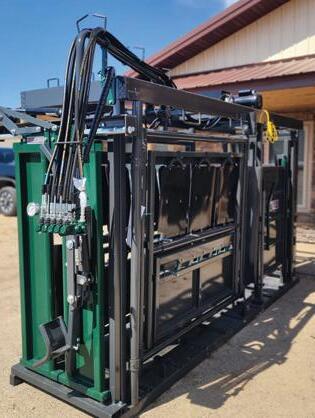



Wilczek’s son, Silas, is often at the classes as well. Both Silas and her younger son, Sawyer, help Wilczek at home and it has become a part of their everyday life, Wilczek said.
“I think Silas could probably teach the class if he wanted to,” Wilczek said. “The boys both love helping, and they’re very much a part of what we do.”
Wilczek said her goal is to teach those taking the class a way to make sourdough fit into their schedules, so it is not as overwhelming.

“You see things online about feeding it every day or having to bake it on specific days, and that’s just not true,” Wilczek said. “I always say to make sourdough fit your life, not to try and fit your life around sourdough.”
The second course goes over different baked goods that can be made from the sourdough, including muffins or bagels. There are a lot of different options for baked goods, Wilczek said.
Wilczek’s sourdough technique is different from others because she uses a “no discard” method, so there is no need to find something to do with the discarded dough. Some sourdough recipes have a discard method, where certain amounts of the dough are separated from the rest of the starter to keep it healthy.
“People can make different baked goods using the discard, so it’s not getting thrown away,” Wilczek said. “But it’s just one more step and one more thing for people to worry about, and I’m trying to simplify it as much as I can.”
Wilczek opted to not use discard because it is easier and less time-consuming, she said. By teaching people how to work out of just one jar, it eliminates the stress of which jar is discard,
and it saves them time and money. Wilczek said not having discard makes it more achievable to continue making bread because it is a simpler process.
The courses provide students with not only sour-dough starter and kits but plenty of information as well. Wilczek said she has PowerPoint presentations printed so students can take them home for reference. She has also created sheets with vocabulary words and pictures on them to help ease any confusion that might come up during baking.
“People will call me with questions and not quite understand what they’re even asking,” Wilczek said. “The vocabulary sheets and the diagrams help narrow it down so we’re both on the same page.”
Wilczek encourages her students to ask questions and reach out if they encounter problems in their baking endeavors.
Wilczek page 23















































































































































How are you preparing for the county fair?

What 4-H club are you in? The Renville County trailblazers.
How long have you been in 4-H, and what do you enjoy about it? I’ve been in 4-H for three years, and my favorite part is getting to show as many animals as I want.
Tell us about the project/projects you are working on for this year’s fair. I’m showing a cow at the fair, and then I’m going to bring a quilt and a pillow case and some other arts and crafts.
Why did you choose these to be your project/projects? I like to do arts and crafts and make things. Cows are one of my favorite animals.
How are you preparing for the county fair? I practice with my cow, and we put a halter on it (and) walk it with the stick. I’ll give it a bath and make sure the trailer is ready.
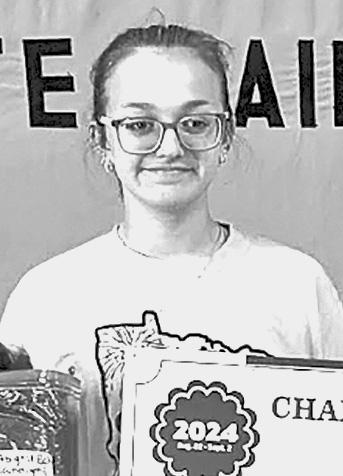
What 4-H club are you in? St. John’s Roadrunners.
How long have you been in 4-H, and what do you enjoy about it? 11 years. The opportunities that it has given me to help my community.
Tell us about the project/projects you are working on for this year’s fair. I am working with my crossbred steer, which is a new project for me this year. I am also doing several citizenship and community pride projects.
Why did you choose these to be your project/projects? I enjoy learning new things and helping people.
How are you preparing for the county fair? Working with my animal daily and working on general projects in my spare time.
What 4-H club are you in? We are both in the Swift Falls Winners 4-H Club.
How long have you been in 4-H, and what do you enjoy about it? Kaitlyn has been in 4-H for 11 years and Ella for 10. Ella’s favorite part of 4-H is learning how to be a leader, and Kaitlyn’s is the people she gets to meet.
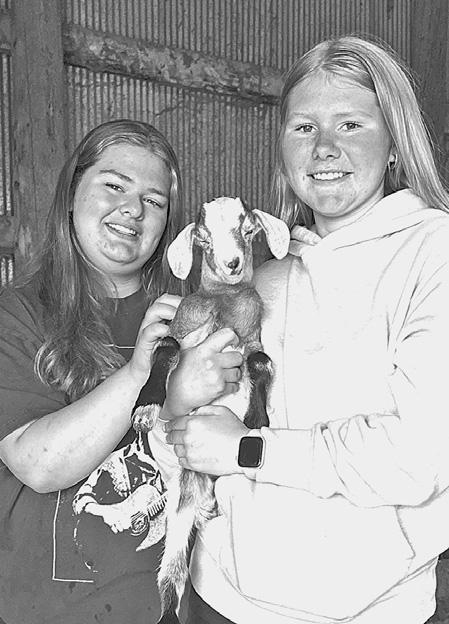
Tell us about the project/projects you are working on for this year’s fair. Ella is bringing four goats, one cow, a safety project, a woods project and a few others. Kaitlyn will bring a goat, a rabbit, and a handful of other projects including metals, fine arts, and a health and wellness project.
Why did you choose these to be your project/projects? Ella chose her projects because she was interested and wanted to learn more about them. Kaitlyn chose hers because (they) let her learn about a bunch of new interests.
How are you preparing for the county fair? Both Ella and Kaitlyn work with their livestock every day. Ella does research on the safety information and finds inspiration photos for woods and other projects. Kaitlyn works on all of the various projects she’s bringing so they are show-ready.











































June:
Morrison County Fair, June 26-29, Little Falls
Todd County Fair, June 26-29, Long Prairie
July:
Grant County Fair, July 16-20, Herman
Meeker County Fair, July 30 – August 3, Litchfield
Pope County Fair, July 30 – August 2, Glenwood
August:
Stevens County Fair, August 5-10, Morris
Stearns County Fair, August 6-10, Sauk Centre
Kandiyohi County Fair, August 6-9, Willmar Renville County Fair, August 6-8,













































































BY RAE LANZRATH | STAFF WRITER
OSAKIS — Throughout her life, Moli Swenstad has indulged in many different activities. Lately, she has spread her wings into a something unique: raising game birds.
Swenstad and her husband, Kyle, own and operate Northland Game Birds north of Osakis. The couple are both Osakis natives and grew up hunting in the area.

“I work for two hunting companies running their social media,” Swenstad said. “So, being in the hunting industry is not new to me.”
Northland Game Birds serves as a middleman for the game bird industry, Swenstad said. The game birds are hatched on a farm in Pennsylvania. The birds are then transported to the Swenstads’ farm. From there, Swenstad takes the birds to various dog trainers or hunting preserves.
“We’re crucial to other compa-

nies’ successes,” Swenstad said. “If we fail, they don’t get birds anymore and they fail.”

The Swenstad family has owned Northland Game Birds for nearly a year after taking over an existing business. The couple who originally owned the farm was ready to retire, so they sold their business. Swenstad heard about the farm for sale and approached the couple selling it.

“It honestly worked out really well,” Swenstad said. “I was waiting for there to be some red flag or some sign telling us not to do it, and there just wasn’t.”
The Swenstads raise chukar partridges, a bird commonly used for hunting or dog training. Swenstad said people training hunting dogs will often buy the chukars as practice birds.
Swenstad page 26


PHOTOS SUBMITTED Moli (from left), McKinley, Sawyer and Kyle Swenstad gather Oct. 26, 2024, at Northland Game Birds in rural Osakis. The Swenstads took over the farm in 2024.



A chukar partridge stands March 21 at Northland Game Birds in rural Osakis. The farm typically has 50,000 birds per year.



































On average, Swenstad said around 50,000 chukars will live on the farm each year. She said they can haul 7000 birds on the truck from the hatchery.
“Sometimes, they’re here for a few months, and sometimes, it’s only a few days,” Swenstad said. “It just depends on how busy we are.”
After purchasing the game bird farm, Swenstad began delivering birds to customers and working with various committees and boards within the industry.
“Getting involved and meeting more people has really helped us,” Swenstad said. “We all kind of work together, so it’s important to have those relationships.”

Most of the time, the birds are delivered to hunting preserves, Swenstad said. The customers will release the birds for hunting, sometimes receiving thousands from Northland Game Birds.
“We have crates that we can fit 20 birds into each one,” Swenstad said. “They get loaded onto our truck, and then we just go along whatever delivery route we have that day.”
The couple has two young children, McKinley and Sawyer, and Swenstad said sometimes she brings them along on deliveries.








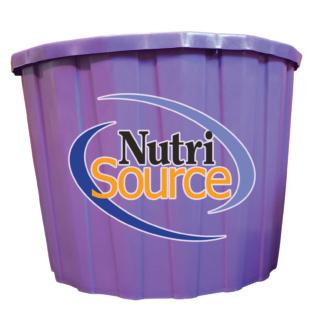






“It’s the definition of a family business,” Swenstad said. “My daughter is 4, and she loves going out and checking on the birds.”
Swenstad said Sawyer, who is only two years old, cannot get out the door fast enough if she asks him if he wants to go deliver birds. McKinley, who is a little bit older, is equally as excited to go to the farm, even if it involves doing chores.
Although running the farm and raising her children occupy a lot of her time, Swenstad said she is very busy with other things as well.







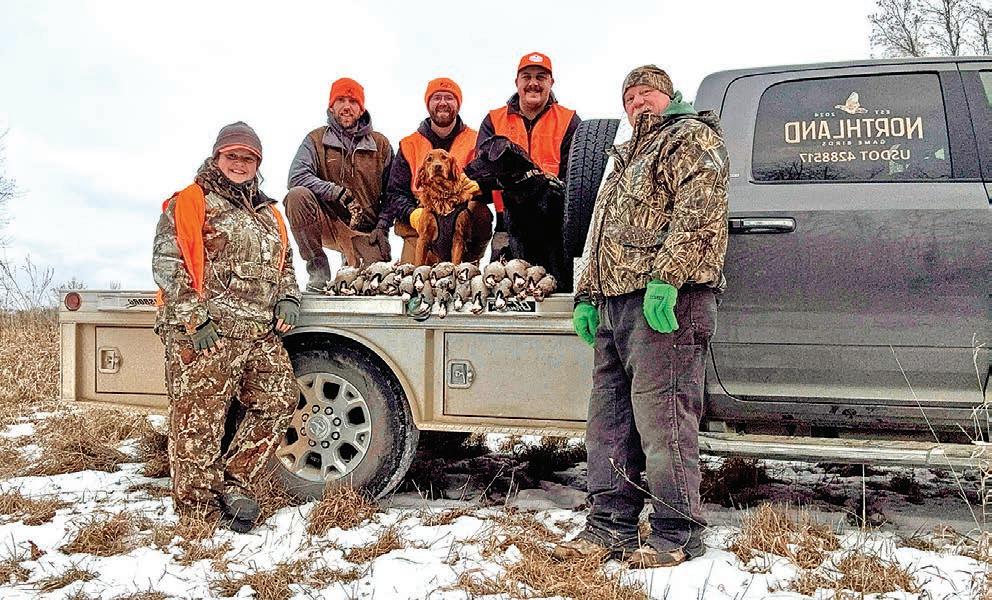







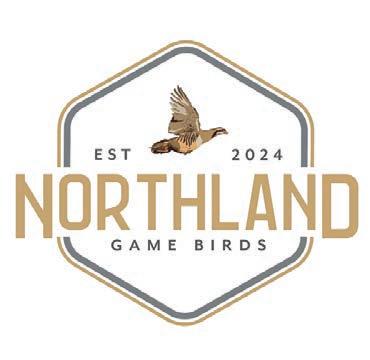















































Find the Bongards logos and enter for your chance to WIN 10 pounds of Bongards® Premium Cheese and Butter.
Here’s how it works:
1. Count the Bongards logos throughout this issue (excluding this page).
2. Complete the entry form.

3. Send entries to: Country Acres, 522 Sinclair Lewis Ave., Sauk Centre, MN 56378, Attn: CA Contest
4. Entries must be received by July 16.
5. Winners will be drawn at random from the correct entry blanks received. Three winners will each receive eight pounds of cheese and 2 pounds of butter.
